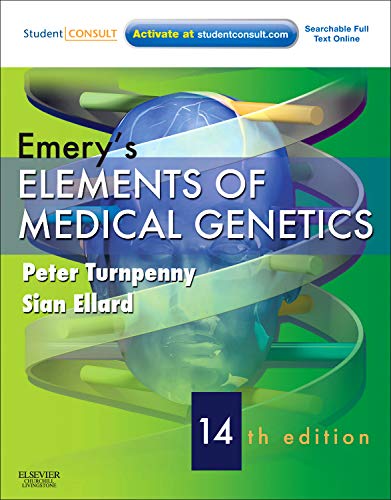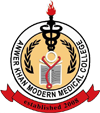Anwer Khan Modern Medical College
Library Management System

| Title: | Emery's elements of medical genetics. |
| Author Name: | Peter D. Turnpenny and Sian Ellard. |
| Author Sur Name: | TURNPENNY, Peter D. |
| Author information: |
|
| Edition/Published: | 14th ed. _Philadelphia : Elsevier , 2012 |
|
Physical Description: : <p>xiii, 445 p. : ill. ; 28 cm.</p>.; |
| Notes | Includes bibliographical references and index. |
| Includes Index: | 425-445 |
| ISBN No's: | 978-0-7020-4043-6 , |
| Bar Code's: | , |
| Shelf Location's: | , |
| Classification | |
| Subject: | Medical Genetics |
| Dewey Class No: | 616.042 |
| LC Classification: | RB155.E52012 |
| Other's Book Information | |
| Book ID No: | 1692 , 1693 |
| Total Books: | 2 |
| Date of collection's: | 01-Nov-2016 , 01-Nov-2016 |
| Language: | English |
| Status: | Available |
| Department: | BioChemistry |
| Synopsis: |
|
| Description: |
|
| Key Features: |
|
| Summary: |
Emery's Elements of Medical Genetics was published in 2021, and it covers the latest developments and discoveries in the field of medical genetics. The book provides comprehensive coverage of genetic principles, genetic counseling, and clinical genetics, making it an essential resource for medical students, genetic counselors, and healthcare professionals who work with patients and families affected by genetic disorders. |
| Abstract: |
A student who needs to know about medical genetics is here in the 15th edition of this award-winning textbook. Thoroughly updated and revised throughout to map a fast-moving area, the 15th edition continues Emery’s enviable reputation for successfully balancing up-to-dateness in a rapidly developing field with a strong basis in practical clinical genetics for medical students. With MCQs and Case-Based Review Questions, end-of-chapter summaries, and convenient online access, it is the essential tool for this complex but foundational topic for all medical undergraduates, as well as postgraduates seeking to improve their understanding and knowledge. |
| Preface: |
“A man ought to read just as inclination leads him; for what he reads as a task will do him little good.”---Dr. Samuel Johnson Advances and breakthroughs in genetic science are continually in the news, attracting great interest because of the potential, not only for diagnosing and eventually treating disease but also for what we learn about humankind through these advances. In addition, almost every new breakthrough raises a fresh ethical, social, and moral debate about the uses to which genetic science will be put, particularly in reproductive medicine and issues relating to identity and privacy. Increasingly, today’s medical graduates, and mature postgraduates, Since the publication of the thirteenth edition of Emery’s Elements of Medical Genetics, there has been a huge surge forward in our knowledge and understanding of the human genome as the technology of microarray comparative genomic hybridization has been extensively applied, both in research and clinical service settings. We know so much
|
| Content: |
SECTION A The Limb as a Developmental Model 97 Antenatal and Newborn Hemoglobinopathy Hemochromatosis 244 Presymptomatic Diagnosis of Autosomal Dominant Bayes’ Theorem and Prenatal Screening 345
|
